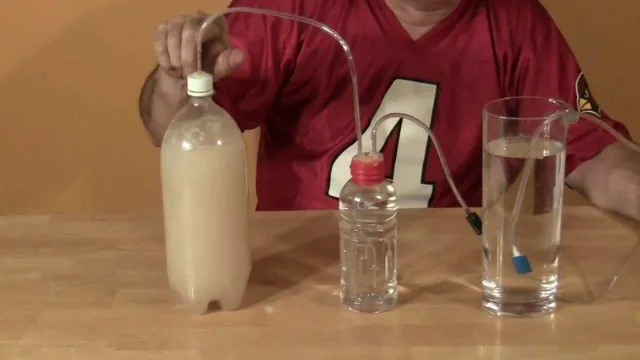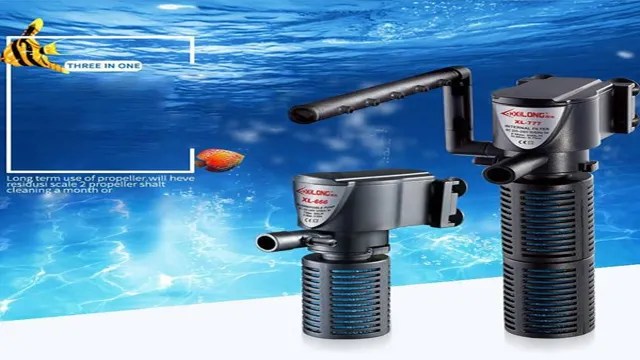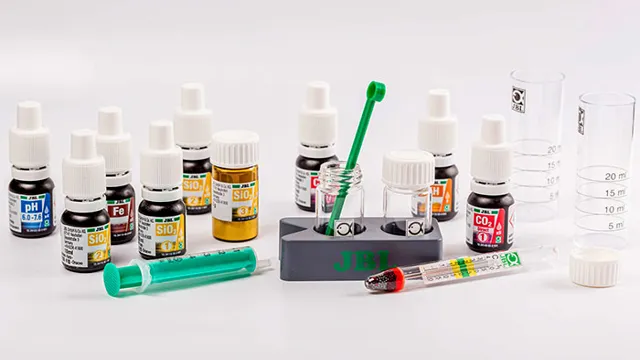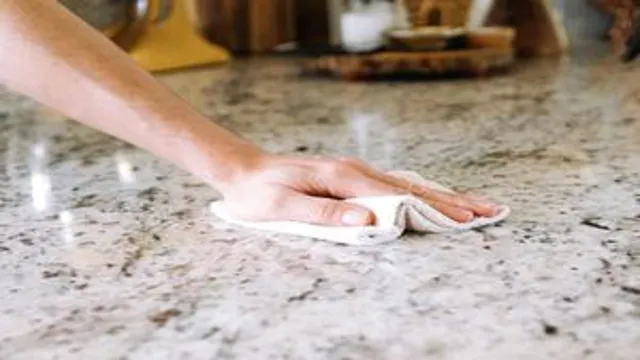As aquarium enthusiasts, we all want the best living conditions for our aquatic pets. One of the key components in creating a healthy environment for them is ensuring adequate oxygen levels. Low oxygen levels can result in stress and illness for the fish, and even death in severe cases.
While there are many options for purchasing oxygen systems, they can be expensive and may not fit every budget. So, why not consider a DIY solution for oxygenating your aquarium? With a bit of creativity and some simple materials, you can create an effective oxygenation system that will keep your fish healthy and happy. In this article, we’ll explore different ways to create a DIY oxygen system for your aquarium, and how to ensure it works effectively for your set-up.
Why DIY Oxygen is Beneficial
If you’re looking to improve the quality of your aquarium, then making DIY oxygen can be incredibly beneficial. Oxygen is crucial for the health and well-being of aquatic plants and animals, and by producing your own oxygen, you’ll be ensuring that your aquarium has enough of it. Not only that, but using a DIY oxygen system can also help lower costs in the long run.
Making your own oxygen can be done using various methods, such as using water plants or agitation to increase oxygen levels in the water. However, one of the most effective ways to make DIY oxygen is by using an air stone. By providing a constant stream of small air bubbles, an air stone can quickly increase the oxygen levels in your aquarium, leading to a healthier and more vibrant ecosystem.
Try making your own DIY oxygen for your aquarium today and see the difference for yourself!
Improves Fish Health
If you have an aquarium at home, you know how important it is to provide a healthy environment for your fish. One of the best ways to keep your fish healthy is to provide them with enough oxygen. This is where DIY oxygen comes in.
By creating your own oxygen supply, you can ensure that your fish are getting enough oxygen to thrive. Oxygen is essential for fish health as it helps them breathe, boosts their immune system, and promotes overall health. By increasing the oxygen levels in your aquarium, you can also prevent the growth of harmful bacteria and promote healthy bacteria growth.
So, if you want to improve your fish’s health and create a thriving aquarium, consider making your own oxygen supply. It’s easy, affordable, and the benefits are worth it!
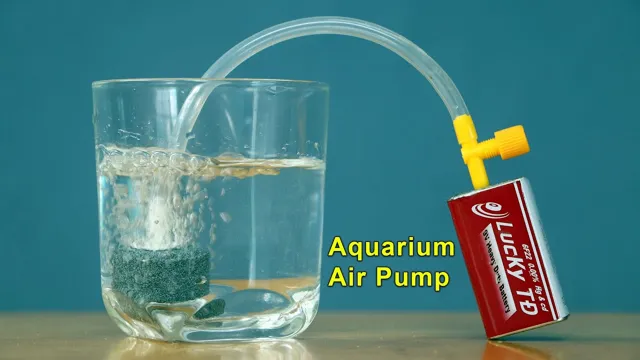
Reduces Chance of Dead Zones
Dead zones in aquatic ecosystems occur when there is not enough oxygen in the water to support life. These areas often result from human activity such as pollution and nutrient runoff. However, DIY oxygen can be a simple solution to reduce the likelihood of dead zones.
By introducing oxygen into water sources, aerobic bacteria are able to thrive and break down excess nutrients that contribute to dead zones. This can be achieved through simple methods such as adding plants or aerating the water. Not only does this benefit aquatic life, but it also promotes healthy ecosystems overall.
In short, taking steps to increase oxygen levels in water sources is a crucial step in preventing dead zones and promoting a sustainable environment.
Materials Needed
If you’re looking to add some oxygen to your aquarium, making your own DIY oxygen can be a cost-effective and practical solution. To get started, you’ll need a few materials. First, you’ll need an air pump, which you can purchase at your local pet store or online.
You’ll also need airline tubing to connect the air pump to a diffuser stone or an air stone. The stone will help distribute the oxygen evenly throughout your aquarium. If you plan on adding plants to your aquarium, you’ll also need a CO2 diffuser.
This will help ensure that your plants receive the necessary amount of carbon dioxide for photosynthesis. Lastly, you’ll need clean water, as the quality of the water can impact how effective your DIY oxygen system is at producing oxygen. By having these materials on hand, you can easily create your own DIY oxygen system for your aquarium.
Hydrogen Peroxide
Hydrogen peroxide is a versatile chemical compound that can be used for various purposes like cleaning and whitening teeth. To use hydrogen peroxide, you will need a few materials such as a bottle of hydrogen peroxide solution, cotton swabs, and a small cup or bowl. This solution comes in different strengths such as 3%, 6%, or 9%, so make sure to choose the right concentration based on your needs. (See Also: How to Make Fine Bubbles in Aquarium: A Step-by-Step Guide for Stunning Results)
For cleaning, mix equal parts of the hydrogen peroxide solution and water in a spray bottle. Then, apply the mixture to the surface you want to clean and wipe it off with a damp cloth. For dental hygiene, dip a cotton swab into the solution and apply it to your teeth gently for a few seconds.
You must always remember to dilute the hydrogen peroxide solution before using it. Although it is a common household item, it should not be used carelessly or ingested. Hydrogen peroxide can be a useful tool, but it must be used safely and in moderation to prevent harm.
Plastic Airline Tubing
Plastic airline tubing is an essential component for aquarium owners who use air pumps to provide aeration and circulation in their fish tanks. To set up this tubing, a few materials are needed to make the process smoother. Firstly, you’ll need a cutter or sharp pair of scissors to cut the airline tubing to your desired length.
A check valve needs to be put in place at the end of the tubing to prevent water backflow and to protect the air pump. You’ll also require a gang valve to regulate the airflow going through the tubing. It’s vital to have several “T” connectors to separate the tubing, which is an important tool to distribute air bubbles to multiple tank areas.
A bubble stone or diffuser is the final piece that will attach to the tubing, enabling you to produce a steady stream of bubbles when the air pump is switched on. Overall, using plastic airline tubing is a cost-effective way to improve circulation and oxygen levels in your fish tanks.
Air Pump
If you’re planning to set up an aquarium, an air pump is a vital tool to ensure the health of your fish. The materials required for an air pump setup include an air pump, airline tubing, check valve, airstone, and a gang valve. Before setting up the air pump, it’s crucial to choose a correctly-sized air pump for your tank, based on the volume and water depth.
Once you have the right pump, the next step is to attach the airline tubing to the pump and then connect the check valve to ensure that water doesn’t backflow into the pump. After that, position the airstone at the bottom of the tank to provide aeration; the gang valve can then be used to control the airflow and provide air to multiple aquariums from one pump. Overall, using an air pump system can prevent stagnation of the water, promote the exchange of gases, and keep your fish healthy and happy.
Making the DIY Oxygen
If you’re looking to make your own DIY oxygen setup for your aquarium, it’s actually quite simple! The key component is an air pump, which can be found at any pet store. You’ll also need some airline tubing and a diffuser, which will help distribute the oxygen throughout the tank. Once you have your supplies, connect the airline tubing to the air pump and the diffuser, then place the diffuser in the tank.
Plug in the air pump and watch as the bubbles start to rise and oxygenate the water. Remember to regularly clean the diffuser and replace the airline tubing to keep the setup working properly. With a little bit of effort, you can easily provide your fish with the oxygen they need to thrive in their aquarium.
So, why not give it a try and see the difference it can make for your aquatic friends?
Step 1: Mix Peroxide and Water
To make your own DIY oxygen, the first step is to mix peroxide and water. Hydrogen peroxide (H2O2) is the key ingredient in this process, and when it mixes with water, it creates a chemical reaction that releases oxygen. You’ll need to mix 35% food-grade hydrogen peroxide with distilled water in a ratio of 1:1
This means that for every 1 part hydrogen peroxide, you’ll need to add 11 parts water. It’s important to use a measuring tool to ensure you get the right proportions. Once you’ve mixed the two together, you’ll need to keep the solution in a sealed container to prevent evaporation.
The process of creating DIY oxygen may seem complicated at first, but it’s actually quite simple. With the right tools and ingredients, you can create your own oxygen generator at home that will provide you with a steady supply of fresh air.
Step 2: Connect Tubing to Air Pump
If you’re looking to make your own DIY oxygen system, the second step is to connect the tubing to the air pump. This is an important step because it facilitates the flow of compressed air into the water, allowing for the development of larger bubbles. To connect the tubing, you’ll need to first locate the air pump and then determine which size tubing will fit properly. (See Also: How to Clean New Aquarium Substrate: The Ultimate Guide for a Sparkling Tank)
Once you have the correct tubing, attach it to the air pump’s outlet using a T-connector. This connector will allow the compressed air to be evenly distributed across multiple diffusers, providing oxygen to the entire aquarium. It’s important to ensure that the tubing is securely fastened to both the air pump and the diffusers to prevent any air leaks.
With the tubing properly connected, you’ll be one step closer to creating an effective DIY oxygen system for your aquatic pets.
Step 3: Add Peroxide Solution to Aquarium
Now that you’ve made the hydrogen peroxide solution, it’s time to add it to your aquarium. The purpose of this step is to release oxygen into the water. It’s important to note that you should only add a small amount of the solution, or else you risk harming your fish and other aquatic creatures.
Start by adding only one milliliter of the peroxide solution per gallon of water in your tank. Wait for a few minutes and observe the surface of the water. If you notice bubbles forming, it’s a sign that the process is working.
If there are no bubbles, you can add a little bit more of the peroxide solution. However, be careful not to add too much at once, as it can create an increase in oxygen levels that can potentially harm your aquatic pets. By keeping an eye on the surface and adding peroxide slowly, you can create a healthy and oxygen-rich environment for your fish to thrive in.
Remember to test your water levels regularly to ensure the best living conditions for your aquatic friends.
Safety Precautions While Using DIY Oxygen
If you’re looking to make DIY oxygen for your aquarium, it’s important to take safety precautions to avoid accidents and harm to yourself and your aquatic creatures. First and foremost, always use a high-quality oxygen generator that is specifically designed for aquariums. Avoid using makeshift devices or repurposing oxygen generators meant for other purposes as they may contain harmful chemicals or generate unsafe levels of oxygen.
Additionally, make sure to read and follow all instructions carefully to avoid overexposure or misuse. Always wear protective gear, such as gloves and eye goggles, when handling the oxygen generator or oxygen-enriched water. Finally, always monitor oxygen levels in your aquarium to ensure it remains at safe levels for your fish and other aquatic creatures.
With these precautions in place, making DIY oxygen for your aquarium can be a rewarding and safe experience.
Avoid Overdosing
When using DIY oxygen, it’s important to take proper safety precautions to avoid any potential risks. One of the most crucial ones is to avoid overdosing. Oxygen is a highly combustible and reactive gas, so it’s essential to use it with care.
Overdosing can lead to a number of issues, including oxygen toxicity, fire hazards, and even explosions. Therefore, it’s important to use the right amount of oxygen prescribed by your doctor and follow the safety guidelines set forth by the equipment manufacturer. It’s also essential to keep the oxygen equipment away from any heat sources or flammable materials and to ensure proper ventilation.
By taking these precautions, you can ensure your safety and avoid any potential mishaps when using DIY oxygen at home.
Avoid Mixing with Other Chemicals
When working with DIY oxygen, it is crucial to take certain safety precautions. One of the most important things to remember is to avoid mixing it with other chemicals. Oxygen is an incredibly reactive substance and can cause a variety of dangerous reactions when paired with other compounds. (See Also: Where to Place Air Stone in Aquarium: Tips and Tricks for Better Aeration)
Mixing oxygen with certain substances can lead to fire hazards, explosions, and even toxic fumes. As such, it is essential to keep your oxygen away from any other chemicals in your workspace and to only use it in a well-ventilated environment. Always store your oxygen cylinders in a dry and cool place, separate from other flammable or combustible materials.
By taking these safety precautions, you can ensure that you are using DIY oxygen in the safest and most effective way possible, without putting yourself or others at risk.
Conclusion
In conclusion, creating your own oxygen for your aquarium is a simple and cost-effective way to ensure the health and happiness of your aquatic friends. By utilizing common household items like air pumps, tubing, and diffuser stones, you can produce an endless supply of fresh oxygen without ever having to rely on store-bought solutions. So go ahead and channel your inner scientist, DIY your way to a thriving underwater ecosystem, and show off your newfound aquatic expertise to all your friends.
After all, there’s nothing fishy about being a DIY aquarium enthusiast!”
FAQs
Why is oxygen important for aquarium fish?
Oxygen is essential for the survival of aquarium fish as it helps in their respiration process.
What are the signs that an aquarium needs more oxygen?
The water surface may appear still, fish may gasp for air at the surface, or there may be an increase in algae growth.
Can I use regular air pumps to oxygenate my aquarium?
Yes, regular air pumps can be used to oxygenate your aquarium, but it may be necessary to adjust the flow rate and add additional air stones.
How often should I check the oxygen levels in my aquarium?
Oxygen levels should be checked regularly, and at least once a week. The ideal oxygen range for most fish is between 5-7 mg/L.
What are some natural ways to increase oxygen levels in an aquarium?
Adding live plants, decreasing the water temperature, and reducing the number of fish in the aquarium are all natural ways to increase oxygen levels.
Can I make my own DIY oxygen system for my aquarium?
Yes, you can make a DIY oxygen system for your aquarium using a hydrogen peroxide and water mix, or an electrolysis system.
Is it safe to add oxygen directly to my aquarium from an oxygen tank?
It is safe to add oxygen directly to your aquarium from an oxygen tank, but it should be done with caution and monitored closely. It is best to consult with a professional before attempting this.

